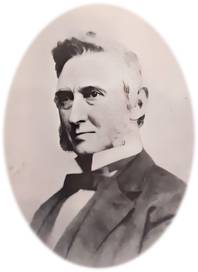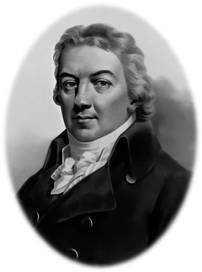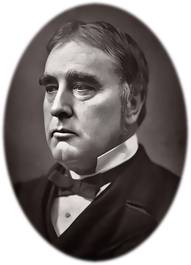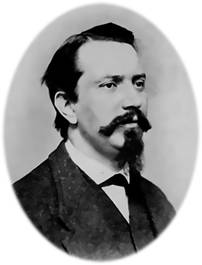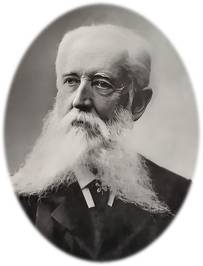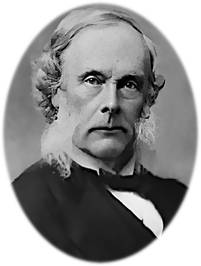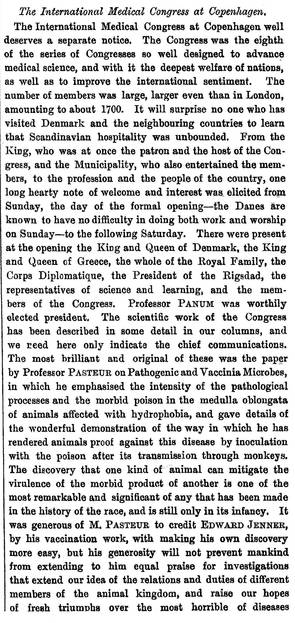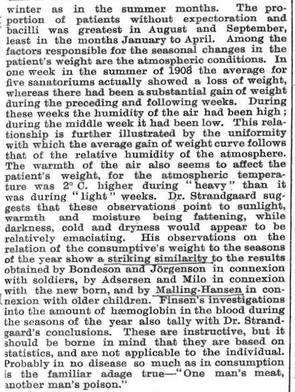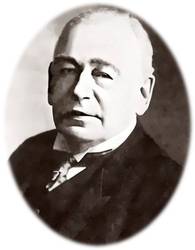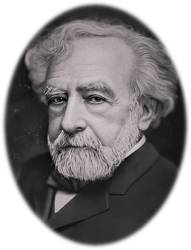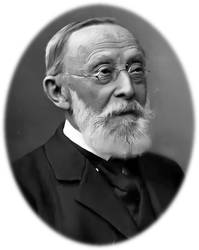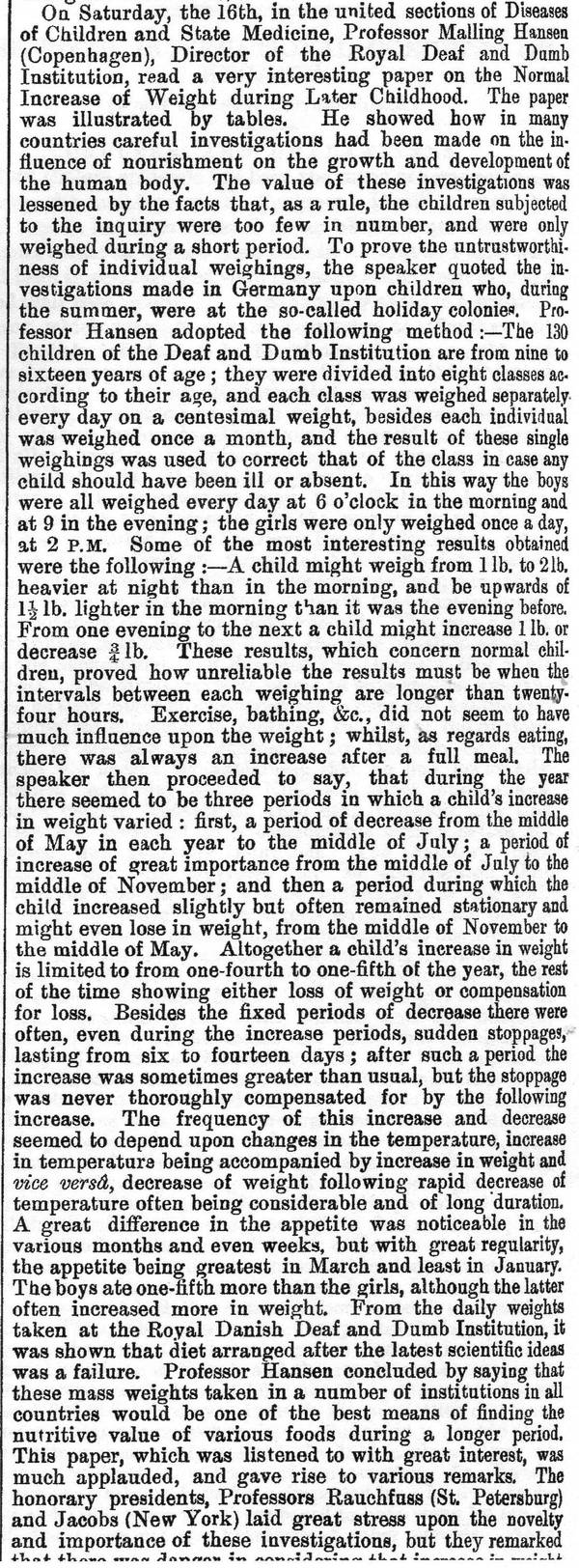Articles in The Lancet 1884
The Lancet 1884 Mentions Rasmus Malling-Hansen and Reports on his Presentation at the Medical Congress.
Research, comments and footnotes by Jørgen Malling Christensen.
The Lancet is one of the most highly regarded general medical journals in the world. It was established in 1823 and ever since then has been publishing weekly peer-reviewed articles. It is regarded as the second-most influential general medical journal in the world, the leading one being “The New England Journal of Medicine”, established in 1812.
At the end of every year, The Lancet brings a summarising article about the main events of the medical year, and its issue of December 27, 1884, carries a summary of the most important events, entitled “The Annus Medicus 1884”. On page 1157 and 1158 the editors bring a very appreciative review of the International Medical Congress at Copenhagen, held August 10-16, 1884.
Remarkably, Malling-Hansen’s presentation is given a brief but positive note – even flattering him with the title of ‘Professor’! The amazing aspect of this is that Malling-Hansen was probably the only presenter who did not have a medical or scientific education in any field of the natural sciences – he was the only amateur among the elite of the medical world at the time – around 1700 participants. The text that follows below is the complete Lancet text about the Medical Congress.
THE LANCET - ANNUS MEDICUS 1884
The International Medical Congress at Copenhagen.
The International Medical Congress at Copenhagen well deserves a separate notice. The Congress was the eighth of the series of Congresses so well designed to advance medical science, and with it the deepest welfare of nations, as well as to improve the international sentiment. The number of members was large, larger even than in London, amounting to about 1700.
It will surprise no one who has visited Denmark and the neighbouring countries to learn that Scandinavian hospitality was unbounded. From the King, who was at once the patron and the host of the Congress, and the Municipality, who also entertained the members, to the profession and the people of the country, one long hearty note of welcome and interest was elicited from Sunday, the day of the formal opening – to the following Saturday.
There were present at the opening the King and Queen of Denmark, the King and Queen of Greece, the whole of the Royal Family, the Corps Diplomatique, the President of the Rigsdag, the representatives of science and learning, and the members of the Congress. Professor PANUM[1] was worthily elected president.
The scientific work of the Congress has been described in some detail in our columns, and we reed[2] here only indicate[3] the chief communications. The most brilliant and original of these was the paper by Professor PASTEUR[4] on Pathogenic and Vaccinia Microbes , in which he emphasised the intensity of the pathological processes and the morbid poison in the medulla oblongata[5] of animals affected with hydrophobia[6], and gave details of the wonderful demonstration of the way in which he has rendered animals proof against this disease by inoculation with the poison after its transmission through monkeys. The discovery that one kind of animal can mitigate the virulence of the morbid product of another is one of the most remarkable and significant of any that has been made in the history of the race, and is still only in its infancy.
It was generous of M. PASTEUR to credit EDWARD JENNER[7], by his vaccination work, with making his own discovery more easy, but his generosity will not prevent mankind from extending to him equal praise for investigations that extend our idea of the relations and duties of different members of the animal kingdom, and raise our hopes of fresh triumphs over the most horrible of diseases affecting man and animals, and our estimate of the value of medicine to mankind.
The communication of Dr. TOMMASI CRUDELI[8] on Malaria and its dependence on a living organism, and the value of arsenic in malarious disease, deservedly attracted much attention. Our readers are in full possession of his views. Sir WILLIAM GULL[9] read what may prove a very important paper on the International Collective Investigation of Disease. Sir WILLIAM so warmly commended this subject to his audience that it had a truly great reception, and was warmly endorsed by the President.
One of the most interesting communications read was that of Dr. AUSTIN FLINT[10] on Auscultatory Sounds. Prof. ESMARCH[11] opened a discussion on the subject of Anticepticism in the absence of Sir JOSEPH LISTER[12], which was one of the most conspicuous, as it was one of the most disappointing features of the Congress.
The Scandinavian countries have been foremost in the appreciation of the antiseptic system of surgery, not the least testimony to which and to its distinguished living leader was expressed by the whole Congress rising in honour of him and his system.
British surgery, however, was well represented in his absence by Sir JAMES PAGET[13], Sir SPENCER WELLS, Mr. BRYANT, Mr. KNOWSLEY THORNTON, Dr. McEWEN, Mr. HENRY MORRIS, and others. English surgery, both in its aspects of safety and boldness, could not have had better illustrations than in the contribution on Colotomy, byt Mr. BRYANT; on Nephrectomy and Nephretomy, by Mr. THORNTON; and in that on Genu Valgum[14], by Dr. McEwen.
Our readers will remember with pleasure two other communications to the Congress – one, by Professor MALLING-HANSEN, containing some remarkable observations on the normal increase of Weight during later childhood (from nine to sixteen years), and one by Professsor PANUM, on Investigation of Food Rations for Men in Health and Disease. The country to be next honoured by the Congress is the United States.
The Lancet Report on Malling-Hansen’s Presentation.
JMC: We know from other sources (see our site) that the congress had plenary meetings from 16.00 to 17:30 every day, but that most of the presentations and ensuing discussions took place in 14 different specialised sections. Malling-Hansen had pre-printed and distributed his contribution in German and gave his presentation on the last day of the Congress – August 16 - in the section for paediatrics, which was, for this occasion, combined with the section of ‘Hygiene and Public Medicine’. As described in other articles on our website, his presentation was greeted with considerable interest and appreciation by the medical authorities present and also found its way into numerous newspapers and magazines in the course of 1884 and 1885. The following text is the Lancet note in the September 6, 1884, issue:
On Saturday, the 16th, in the united sections of Diseases of Children and State Medicine, Professor Malling Hansen (Copenhagen), Director of the Royal Deaf and Dumb Institution, read a very interesting paper on the Normal Increase of Weight during Later Childhood. The paper was illustrated by tables. He showed how in many countries careful investigations had been made on the influence of nourishment on the growth and development of the human body. The value of these investigations was lessened by the fact that, as a rule, the children subjected to the inquiry were too few in number, and were only weighed during a short period.
To prove the untrustworthiness of individual weighings, the speaker quoted the investigations made in Germany upon children who, during the summer, were at the so-called holiday colonies. Professor Hansen adopted the following method: - The 130 children of the Deaf and Dumb Institution are from nine to sixteen years of age; they were divided into eight classes according to their age, and each class was weighed separately every day on a centesimal weight, besides each individual was weighed once a month, and the result of these single weighings was used to correct that of the class in case any child should have been ill or absent. In this way the boys were all weighed every day at 6 o’clock in the morning and at 9 in the evening; the girls were only weighed once a day, at 2 P.M.
Some of the most interesting results obtained were the following: - A child might weigh from 1 lb. to 2 lb. heavier at night than in the morning, and be upwards of 1½ lb. lighter in the morning than it was the evening before. From one evening to the next a child might increase 1 lb. or decrease ¾ lb. These results, which concern normal children, proved how unreliable the results must be when the intervals between each weighing are longer than twenty-four hours.
Exercise, bathing &c., did not seem to have much influence upon the weight; whilst, as regards eating, there was always an increase after a full meal. The speaker then proceeded to say, that during the year there seemed to be three periods in which a child’s increase in weight varied: first a period of decrease from the middle of May in each year to the middle of July; a period of increase of great importance from the middle of July to the middle of November; and then a period during which the child increased slightly but often remained stationary and might even lose in weight, from the middle of November to the middle of May.
Altogether a child’s increase in weight is limited to from one-fourth to one-fifth of the year, the rest of the time showing either loss of weight or compensation for loss. Besides the fixed periods of decrease there were often, even during the increase periods, sudden stoppages, lasting from six to fourteen days; after such a period the increase was sometimes greater than usual, but the stoppage was never thoroughly compensated for by the following increase.
The frequency of this increase and decrease seemed to depend upon changes in the temperature, increase in temperature being accompanied by increase in weight and vice versa, decrease of weight following rapid decrease of temperature often being considerable and of long duration. A great difference in the appetite was noticeable in the various months and even weeks, but with great regularity, the appetite being greatest in March and least in January. The boys ate one-fifth more than the girls, although the latter often increased more in weight.
From the daily weights taken at the Royal Deaf and Dumb Institution, it was shown that diet arranged after the latest scientific ideas was a failure. Professor Hansen concluded by saying that these mass weights taken in a number of institutions in all countries would be one of the best means of finding the nutritive value of various foods during a longer period. This paper, which was listened to with great interest, was much applauded, and gave rise to various remarks. The honorary presidents, Professors Rauchfuss (St. Petersburg) and Jacobi (New York) laid great stress upon the novelty and importance of these investigations, but they remarked that there was danger in considering that increase in weight and fat and increase in health and strength were synonymous. To this Professor Hansen replied that it was hardly probable that a child could increase in health and strength without increasing in weight, and at the same time a child which continued to lose in weight must also lose in strength.
[1] JMC: Peter Ludvig Panum, 1820-1885, Danish physiologist and pathologist. He was rewarded with the Danish Order of the Knights for his accomplishments in connection with the cholera epidemic at Bandholm, Lolland, in 1853 – a few kilometers from Rasmus Malling-Hansen’s home at Hunseby!
[2]JMC: ‘reed’ used in this context is a word of British dialect, meaning ‘sift’, in other words synonymous with ‘select’.
[3] JMC: The sentence is not coherent and not correct. The writer probably meant to choose between ‘reed’ and ‘indicate’ and by mistake included both alternatives.
[4] JMC: Louis Pasteur, 1822-1895, French chemist and microbiologist renowned for his discoveries of the principles of vaccination, microbial fermentation and pasteurization. He created the first vaccines for rabies and anthrax. Pasteur is regarded as one of the three main founders of bacteriology, together with Ferdinand Cohn (1828-1898) and Robert Koch(1843-1910).
[5] JMC: = the lowest or hindmost part of the brain, continuing into the spinal cord.
[6] JMC: = rabies
[7] JMC: English physician and scientist, pioneer of smallpox vaccine, the world’s first vaccine.
[8] JMC: Corrado Tommasi-Crudeli, 1835-1900, Italian physician known for his works in pathology and hygiene. He discovered that bacteria caused diseases such as typhoid (the disease that killed Rasmus Malling-Hansen’s father in 1839) and diphtheria. However, his theories concerning malaria, mentioned in this article, were later proven to be erroneous, since malaria is not caused by bacteria.
[9] JMC: Sir William Whitney Gull, 1816-1890, English physician who made a number of significant contributions to medical science. e.g. in relation to Myxoedema, Bright’s Disease, Paraplegue and Anorexia Nervosa (concerning the latter, Gull coined the term). In later times (since the 1970s) Gull has been linked to the unsolved 1888 Whitechapel murders, and a number of writers and film makers have put forward the hypothesis that Gull was Jack the Ripper.
[10] JMC: Austin Flint, 1836-1915, American physician and professor of physiology.
[11] JMC: Friedrich von Esmarch, 1823-1908, German surgeon and an influential figure in hospital management, military surgery and first aid treatment. Invented the widely used ‘Esmarch bandage’.
[12] JMC: Joseph Lister, 1827-1912, British surgeon and a pioneer of antiseptic surgery, considered ‘the father of modern surgery’. By applying Louis Pasteur’s advances in microbiology, Lister promoted the idea of sterile portable ports. He also introduced carbolic acid (phenol) to sterilise surgical instruments and to clean wounds.
[13] JMC: Sir James Paget, 1814-1899, British surgeon and pathologist, one of the founders of scientific medical pathology (together with Rudolf Virchow).
[14] JMC: = knock-knee


